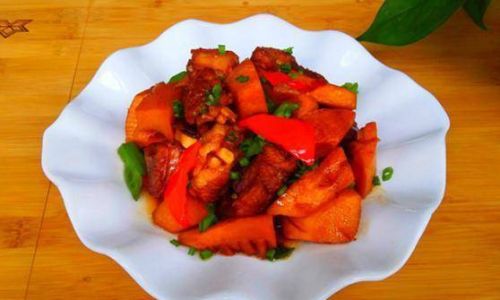Introduction
In the bustling world of street food, few dishes command attention quite like a perfectly roasted Orleans-style chicken. Its golden, crispy skin, succulent meat, and aromatic blend of spices make it a crowd favorite at markets, fairs, and night markets worldwide. For street vendors, mastering this dish isn’t just about cooking—it’s about creating an experience that keeps customers lining up. This article delves into the science and craft of roasting Orleans chicken to perfection, from marination techniques to fire management, ensuring your stall becomes a local legend.
Chapter 1: The Foundation—Selecting the Right Chicken
The journey to greatness begins with the bird itself. Opt for whole chickens weighing between 1.2–1.5 kilograms (2.6–3.3 pounds). Smaller birds risk drying out during roasting, while larger ones may struggle to cook evenly. Look for fresh, not frozen, poultry—frozen chickens often lose moisture during thawing, resulting in drier meat. If frozen is your only option, thaw it slowly in the refrigerator, never at room temperature, to prevent bacterial growth.
Breed Matters
While commodity broiler chickens are affordable, consider upgrading to free-range or organic varieties. Their slightly firmer texture and deeper flavor elevate the final dish. Some vendors swear by “label rouge” chickens (a French designation for slower-growing breeds), but these come at a premium. Balance cost with quality based on your target market.
Prepping for Perfection
Trim excess fat from the cavity and neck area, but leave the skin intact—it’s crucial for flavor and moisture retention. Pat the bird dry with paper towels; removing surface moisture ensures crispier skin. For presentation, truss the chicken with butcher’s twine to create a compact shape, promoting even cooking.

Chapter 2: The Marination Masterclass
Orleans-style roast chicken derives its signature taste from a meticulously balanced marinade. The key lies in harmonizing sweet, savory, and spicy elements while ensuring the flavors penetrate deep into the meat.
The Classic Orleans Marinade Recipe
- Paprika: 3 tablespoons (smoked for depth, sweet for mildness)
- Garlic Powder: 2 tablespoons
- Onion Powder: 1 tablespoon
- Dried Thyme: 1 tablespoon
- Dried Oregano: 1 tablespoon
- Cayenne Pepper: 1–2 teaspoons (adjust to heat preference)
- Black Pepper: 1 tablespoon (freshly ground)
- Salt: 1.5 tablespoons (kosher or sea salt)
- Brown Sugar: 2 tablespoons (caramelizes during roasting)
- Olive Oil: ½ cup (acts as a tenderizer and binder)
- Lemon Juice: ¼ cup (acidic component for tenderness)
Mixing Technique
Whisk the dry spices first to distribute evenly, then incorporate the wet ingredients. For authentic Orleans flavor, some vendors add a splash of Worcestershire sauce or a pinch of celery salt. Marinate the chicken for at least 12 hours, ideally 24, in a food-safe container. Turn the bird every 6 hours to ensure even coating.
The Science Behind the Soak
Acidic components like lemon juice break down muscle fibers, tenderizing the meat, while salt acts as a brine, locking in moisture. Fat from the olive oil conducts heat evenly and bastes the chicken during roasting.
Chapter 3: Roasting Techniques for Street Vendors
Street vendors face unique challenges: limited equipment, high turnover, and the need to cook consistently in open-air environments. Here’s how to adapt professional techniques to a mobile setup.
Equipment Essentials

- Rotisserie Oven: Invest in a commercial-grade gas or electric rotisserie. Models with infrared burners or adjustable height settings offer better control.
- Charcoal Grill: For a smokier flavor, use a kettle grill with indirect heat. Place a drip pan under the chicken to catch fat and prevent flare-ups.
- Spit Rods: Ensure they’re sturdy enough to handle the chicken’s weight without bending.
Temperature Control
- Preheating: Preheat your rotisserie to 175–190°C (350–375°F). Higher temperatures crisp the skin but risk drying the meat; lower settings ensure juiciness but require longer cooking.
- Monitoring: Use a probe thermometer inserted into the thickest part of the thigh (avoiding bone). Target 74°C (165°F) for food safety.
The Rotisserie Advantage
Continuous rotation self-bastes the chicken, distributing juices evenly. For charcoal grills, add wood chips (hickory or applewood) for smokiness, but avoid overpowering the spices.
Chapter 4: Achieving Crispy Skin Without Sacrificing Juiciness
The eternal dilemma: crispy skin vs. moist meat. Here’s how to reconcile both.
Dry Brining
After marinating, pat the chicken dry again and let it air-chill uncovered in the refrigerator for 2–4 hours. This dehydrates the skin, leading to superior crispiness.
Basting Hacks
While some vendors baste with butter or oil, this can soften the skin. Instead, try:
- Malt Vinegar Spritz: Lightly mist the skin every 20 minutes during roasting. The acidity tightens the skin, enhancing crispness.
- Honey Glaze: In the final 10 minutes, brush on a mixture of honey and water for caramelization without sogginess.
Resting Period
Let the chicken rest for 10–15 minutes after roasting. This allows juices to redistribute instead of spilling out when carved. Tent it loosely with foil to retain heat.

Chapter 5: Serving Strategies for Street Success
Presentation and efficiency are as critical as flavor.
Carving Techniques
Pre-slice the chicken into quarters (breast, thigh, drumstick, wing) for faster service. Use a sharp chef’s knife and stabilize the bird with a carving fork. Offer sauce on the side to prevent sogginess.
Sides That Complement
Pair with:
- Coleslaw: A creamy, tangy counterpart to the rich chicken.
- Cornbread: Adds a Southern touch and soaks up juices.
- Fried Plantains: For a tropical twist.
Packaging Hacks
Use biodegradable containers with compartments to keep chicken and sides separate. Include a small packet of wet wipes—customers will appreciate the gesture.
Chapter 6: Troubleshooting Common Pitfalls
Even seasoned vendors face hiccups. Here’s how to fix them:
- Uneven Cooking: Ensure the rotisserie spit is balanced. Rotate the chicken manually if using a grill.
- Bland Flavor: Marinate longer next time, or inject flavor with a syringe filled with extra marinade.
- Burnt Skin: Reduce direct heat exposure. For charcoal grills, use a two-zone fire setup.
Chapter 7: Scaling Up and Cost Management
To maximize profits without compromising quality:

- Bulk Spice Blends: Purchase ingredients in bulk and mix marinades in advance.
- Waste Reduction: Use leftover bones and trimmings to make stock for sauces or soups.
- Energy Efficiency: Opt for propane-powered rotisseries over electric if fuel costs are lower in your area.
Conclusion
Roasting Orleans chicken to perfection is a blend of culinary art and practical street smarts. By mastering marination, temperature control, and presentation, you can transform a simple street food stall into a destination eatery. Remember, consistency is key—regular customers will notice (and reward) even slight improvements. So fire up that rotisserie, embrace the sizzle, and let your chicken do the talking. Your stall won’t just serve food; it’ll create memories.
Word Count: 1,520






0 comments